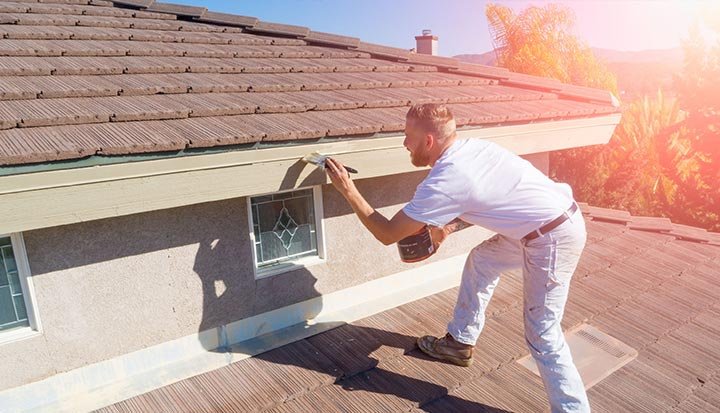The exterior of your home serves as its first line of defence against the elements, but harsh weather can take a toll over time. Rain, sun, wind, and snow can all compromise your home’s appearance and structural integrity, especially if the paint starts to peel, fade, or crack.
Proper planning, regular maintenance, and thoughtful design choices are essential to preserve the beauty and durability of your home. Whether planning a new exterior painting project or looking to maintain an existing one, the right strategies can make all the difference.
Here’s how to protect your home’s exterior paint from extreme weather.
Waterproof the Structure
Before focusing on the paint itself, it’s critical to address the overall integrity of the structure. Waterproofing forms the base layer of protection against moisture-related damage. Water infiltration can lead to issues such as mould, mildew, peeling paint, and even structural decay.
Ensure that your walls, joints, and foundations are sealed and free of cracks. Waterproofing membranes, sealants, and high-quality caulking around seams and gaps can go a long way in keeping moisture out.
If your home is located in a region with heavy rainfall or humidity, consider an extra layer of waterproof coating beneath the paint. This helps maintain the bond between the wall surface and the paint, extending the life of your exterior painting work significantly.
Select the Right Exterior Paint
Choosing the appropriate type of paint is a key step in weather-proofing your home. All paints are not created equal—some are better suited for hot climates, while others are designed to withstand freezing temperatures or saline air near coastal areas. The paint you select should offer flexibility, UV resistance, and moisture resistance.
When embarking on an exterior painting project, go for paints that can expand and contract with temperature changes without cracking. Matte or satin finishes often work well for walls exposed to direct sunlight, as they resist fading and are easier to clean. Also, using a good primer before painting ensures better adhesion and longevity, reducing the frequency of repainting due to weather damage.
Think About Roof Tiles
The roof plays a major role in shielding your home’s painted surfaces from environmental exposure. Poor roofing can lead to water leakage and trickling, which eventually damages walls and causes streaking or bubbling in the paint. Choosing the right roof tiles based on your region’s climate is vital.
For hot and sunny areas, heat-reflective tiles can reduce surface temperature and help maintain the integrity of exterior paint near roof lines. In colder or rain-prone regions, go for durable, water-resistant roofing materials that won’t let moisture seep down the walls. Proper drainage systems like gutters and downspouts should also be installed to direct rainwater away from the façade, minimising erosion and moisture buildup near painted surfaces.
Protect Doors and Windows
Doors and windows are more than just entry and exit points—they’re potential weak spots where moisture and sun can wreak havoc. Without proper protection, these areas often suffer from flaking paint, warped frames, and rusted hinges. Start by ensuring that all door and window frames are sealed properly with weatherstripping and exterior-grade caulking.
In addition, pay attention to the material of your doors and window sills. Wood, for instance, needs to be treated and painted with weather-resistant coatings to withstand swelling or cracking. Metal surfaces should be primed and painted to resist rust and corrosion. Consider adding shutters, awnings, or overhangs to provide extra protection from direct sunlight and rainfall, particularly for windows facing west or south.
Maintain with Regular Inspections and Cleaning
Once your exterior painting is complete and weather protection is in place, consistent maintenance is key to preserving the finish. Examine the outside of your house at least twice a year as a habit—ideally after the monsoon season or a harsh winter. Look for signs of damage such as cracks, blistering paint, or mildew growth.
Cleaning the exterior walls occasionally using a mild detergent and water helps remove accumulated dirt, mould, and pollutants. This not only keeps your home looking fresh but also prevents long-term damage to the paint. Avoid high-pressure washers unless the surface can handle it, as they may strip off paint or damage the underlying surface.
Conclusion
Protecting your home’s exterior paint from extreme weather isn’t just about aesthetic appeal—it’s a matter of durability, efficiency, and value. By waterproofing the structure, choosing the right exterior painting materials, ensuring well-maintained roofing, and safeguarding doors and windows, you create a resilient barrier against the elements.
Regular upkeep, timely touch-ups, and smart material choices go a long way in keeping your home looking its best for years to come. Investing time and attention in these steps will reward you with a home that stands strong and beautiful, regardless of what the weather brings.

